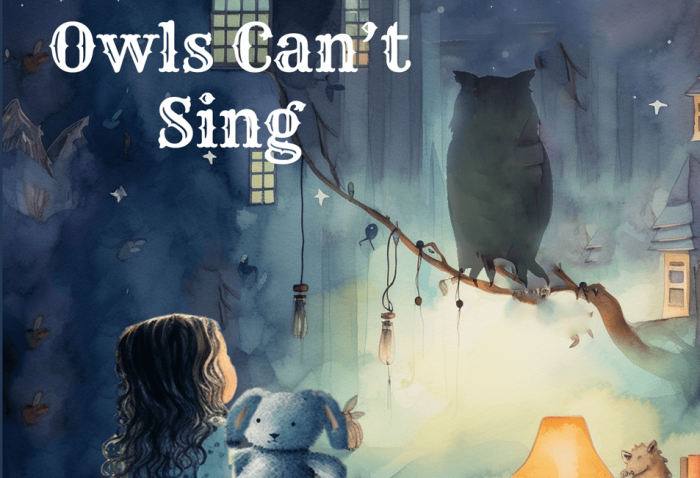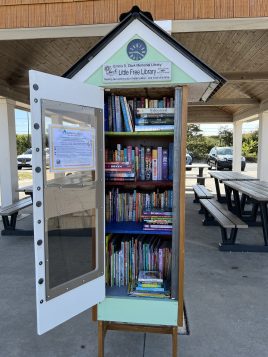By Daniel Dunaief
People often think of and study systems or organs in the body as discrete units.
In a healthy human body, however, these organs and systems work together, sometimes producing signals that affect other areas.
Recently, Cold Spring Harbor Laboratory Associate Professor Camila dos Santos and graduate students Samantha Henry and Steven Lewis, along with former postdoctoral researcher Samantha Cyrill, published a study in the journal Nature Communications that showed a link in a mouse model between persistent bacterial urinary tract infections and changes in breast tissue.
The study provides information about how a response in one area of the body could affect another far from an infection and could provide women with the kind of information that could inform the way they monitor their health.
To be sure, dos Santos and her graduate students didn’t study the processes in humans, which could be different than they are in mice.
Indeed, they are in the process of establishing clinical studies to check if UTIs in women drive breast alterations.
The body’s response
In this research, the scientists demonstrated that an unresolved urinary tract infection itself wasn’t causing changes in breast tissue, but that the body’s reaction to the presence of the bacteria triggered these changes.
By treating the urinary tract infections, Henry and Lewis showed that breast cells returned to their normal state.
Further, when they didn’t treat the UTI but blocked the molecule TIMP1, which causes collagen deposits and milk duct enlargements, the breast cells returned to their normal state.
The TIMP1 role is “probably the main eureka moment,” said Lewis, who is an MD/ PhD student at Stony Brook University. “It explains how an infection in the bladder can change a faraway tissue.”
Lewis suggested that collagen, among other factors, changes the density of breast tissue. When women get a mammography, doctors are looking for changes in the density of their breasts.
Taking a step back from the link, these graduate students and dos Santos considered whether changes in the breast tissue during an infection could provide an evolutionary benefit.
“From an evolutionary standpoint, there should be some adaptive advantage,” suggested Henry, who is earning her PhD in genetics at Stony Brook University and will defend her thesis in July. Speculating on what this might be, she suggested the mammary gland might change in response to an infection to protect milk production during lactation, enabling a mother to feed her young.
Epidemiological studies
A link between persistent UTIs and breast cancer could show up in epidemiological studies.
Dos Santos and collaborators are exploring such questions in the context of European data and are working with US collaborators to collect this information.
In addition, dos Santos believes women should consider how other ongoing threats to their overall health impact their bodies. Women with clinical depression, for example, have worse prognoses in terms of disease. Humans have health threats beyond UTIs that could predispose them to developing cancer, dos Santos said.
Division of labor
Henry and Lewis took over a study that Samantha Cyrill, the third co-first author on the paper started. When Cyrill finished her postdoctoral work, Henry and Lewis “put on their capes and said, ‘We are going to take this to the end line.’ They are incredible people,” said dos Santos.
They each contributed to the considerable work involved.
Henry primarily analyzed the single cell RNA sequencing data, specifically identifying changes in the epithelial compartment. Gina Jones, a visiting CSHL undergraduate research program student, and Lewis also contributed to this.
Henry also participated in TIMP1 neutralizing antibody treatment in post-lactation involution mice, contributing to tissue collection and staining.
Working with Cyrill and Henry, Lewis contributed to the mouse work, including experiments like neutralizing TIMP1 and CSF3. Lewis also worked with Cyrill on the UTI infections in the animals and with Henry in processing tissues for single cell RNA sequencing and assisted Henry on the sequencing analysis.
While this result is compelling and offers an opportunity to study how an infection in an area of the body can trigger changes in another, dos Santos recognized the inherent risk in a new project and direction that could have either been disconnected or a been a dead end.
“It was an incredible risk,” said dos Santos. She was rejected from at least four different funding opportunities because the research is “so out there,” she said. She tapped into foundations and to CSHL for support.
Back stories
A resident of Brooklyn, Lewis was born in Queens and raised in Scarsdale. He joined the dos Santos lab in March of 2021. One of the appeals of the dos Santos lab was that he wanted to understand how life history events drive disease, especially breast cancer.
A big Mets fan, Lewis, whose current favorite payer is Pete Alonso, is planning to run his third marathon this fall.
Lewis is dating Sofia Manfredi, who writes for Last Week Tonight with John Oliver and accepted an Emmy award on behalf of the staff.
Lewis considers himself Manfredi’s “biggest cheerleader,” while he appreciates how well she listens to him and asks important questions about his work.
As for Henry, she grew up in Greenport. She joined the lab in May of 2020 and is planning to defend her thesis in July.
Her father Joseph Henry owns JR Home Improvements and her mother Christine Thompson worked as a waitress and a bartender in various restaurants.
Henry is married to Owen Roberts, who is a civil engineer and works in the Empire State Building for HNTB as a civil engineer, where he focuses on traffic.
Henry hopes to live in Boston after she graduates. She’s adopted the rooting interests of her husband, who is a fan of Beantown teams, and will support the Bruins and the Celtics. A lifelong Yankees fan, however, Henry, who watched the Bronx Bombers with her father growing up, draws the line at supporting the “Sawx.”
As for the work, Henry and Lewis are excited to see what the lab discovers in the next steps.
“I do think this work is extremely informative, defining a relationship between an infection, UTI, and the mammary gland that has not previously been appreciated,” Henry explained.
“This provides information to the public,” said Henry. “I always think it is worth knowing how different events may impact your body.”



 Rachel and Joon have been best friends since kindergarten, when they bonded over a pirate fantasy. Now, eleven years old, in July, between fifth and sixth grade, they have decided to be spies. Additionally, the inseparable pair are facing Joon’s imminent move out of the district, both fearing the toll the distance will take on their friendship.
Rachel and Joon have been best friends since kindergarten, when they bonded over a pirate fantasy. Now, eleven years old, in July, between fifth and sixth grade, they have decided to be spies. Additionally, the inseparable pair are facing Joon’s imminent move out of the district, both fearing the toll the distance will take on their friendship.

 Did you ever think about self-publishing? Why did you go the traditional route?
Did you ever think about self-publishing? Why did you go the traditional route?













